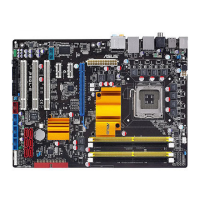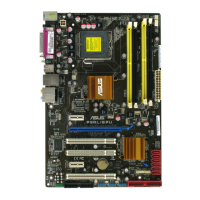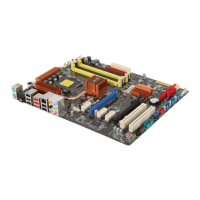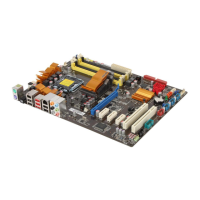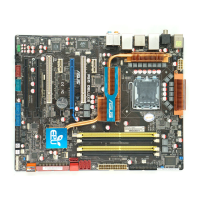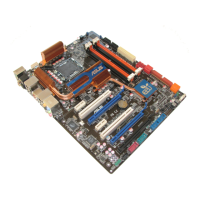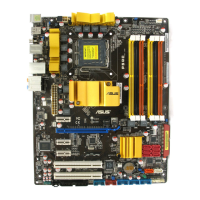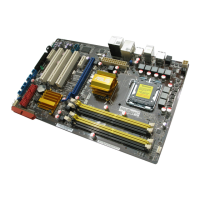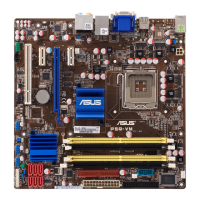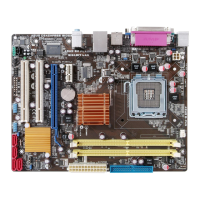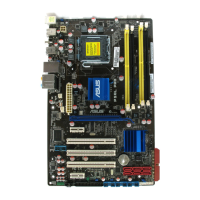
Do you have a question about the Asus P5QL PRO - Motherboard - ATX and is the answer not in the manual?
| Form Factor | ATX |
|---|---|
| Socket | LGA 775 |
| Chipset | Intel P43 |
| Supported CPU | Intel Core 2 Quad, Core 2 Duo, Pentium, Celeron |
| Memory Slots | 4 |
| Max Memory | 16 GB |
| Memory Type | DDR2 |
| PCI Express Slots | 1 x PCIe 2.0 x16, 2 x PCIe x1 |
| PCI Slots | 3 |
| SATA Ports | 6 |
| IDE | 1 |
| Audio | 8-channel HD Audio |
| LAN | Realtek 8111C Gigabit LAN |
| USB Ports | 12 (6 on back panel, 6 via headers) |
Details about the CPU socket and processor compatibility.
Step-by-step guide for installing a CPU into the LGA775 socket.
Procedure for mounting the CPU heatsink and fan assembly.
Steps to safely remove the CPU heatsink and fan.
Information regarding DDR2 DIMM sockets and memory installation.
Procedure for inserting RAM modules into the DIMM sockets.
Steps to safely remove RAM modules from the DIMM sockets.
Guide for physically installing an expansion card into a slot.
Steps for software configuration after installing an expansion card.
Initial steps and procedures for powering on the system.
Methods for safely shutting down the computer.
Utilities and methods for BIOS management and updates.
Using the Windows-based utility to update the motherboard BIOS.
Instructions for preparing a bootable floppy disk for BIOS updates.
In-BIOS utility for updating the motherboard BIOS.
DOS-based utility for updating and backing up the motherboard BIOS.
BIOS recovery tool for corrupted BIOS files.
Introduction to the BIOS setup utility and its interface.
Overview of the BIOS setup screen layout and navigation.
Overview of basic system information displayed in the Main menu.
Settings for SATA devices, including IDE/AHCI modes.
Configuration settings for system performance and overclocking.
Settings for CPU and other system devices.
Advanced settings and information related to the CPU.
Enabling or disabling onboard devices like audio and LAN.
Settings for USB functions, controllers, and legacy support.
Settings for Advanced Power Management (APM).
Settings related to AC power loss and device wake-up.
Monitoring system temperatures, voltages, and fan speeds.
Setting the order of bootable devices.
Setting up system security features like passwords.
